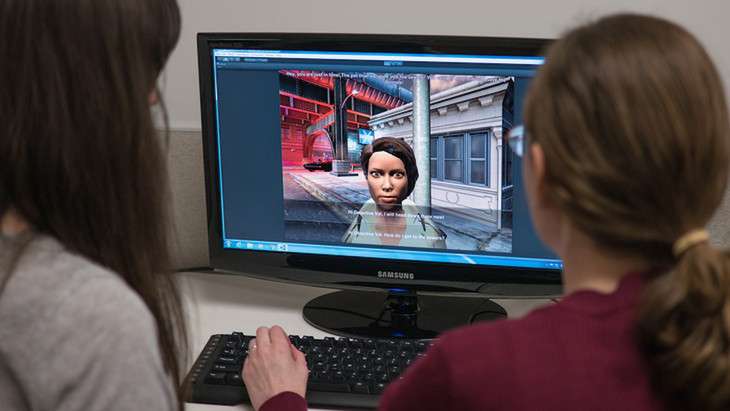Research using game technology to improve social communications in autistic teens

The eyes play a vital role in communication and are thought to influence social behavior. But for children diagnosed with autism, interpreting eye contact is one of the most difficult challenges in social communications.
Suzy Scherf, assistant professor of psychology and head of the Laboratory of Developmental Neuroscience at Penn State, and her research team aim to help autistic adolescents discover how eye gaze provides information about the outside world in a new five-year project funded by the National Institutes of Health.
According to Scherf, diminished attention to faces is one of the earliest behavioral indicators of autism and it persists across the lifespan. "Those diagnosed with autism struggle with social communication, including visual attention to faces and understanding how eye gaze provides important information about the actions and intentions of others," she said. "Without these important social cues, many people with autism struggle in their social interactions."
The project is designed to help adolescents ages 10 to 18 discover facial cues on their own via a highly engaging computer game. "Previous autism therapies relied on an awards-based system, in which the therapist would tell the participant what to do and then the participant would receive a reward. But research has shown that in the real world, once you take away the reward, the learning goes away too," Scherf explained. "Our project allows participants to make their own choices and discover information on their own, making it much more powerful and more likely to be retained."
The computer game is based on the principles of motivational behavior and invites participants to solve a mystery in a complex storyline. Detectives in the game charge players with chasing a criminal through an underground maze below a Gotham-like city. Throughout their mission, players must rely solely on nonverbal cues from bystanders to lead them through the hazy, low-lit maze to catch the bad guy.
In early levels, game characters will use gross motor cues to direct participants to solve the mystery and move on to the next level. As the levels progress, participants need to watch for and learn to interpret increasingly subtle facial and eye gaze cues.
"We consulted with individuals in the gaming industry and were advised to utilize a web-based, Unity 3-D platform so that undergraduate students can easily build and modify the game, including animating the diverse cast of tunnel people, criminals and detectives," said Scherf. Additionally, the platform ensures that the game can ultimately be played via any Internet-connected device, meaning project participants will be able to play the game primarily from home.
In the first phase of the project, 30 adolescents diagnosed with autism will participate, with 15 participants in the intervention group and 15 serving as the control group. Participants in the intervention group will complete a tutorial in the lab before playing the game in their homes for several 30 minute sessions each week over the course of three months The research team will track daily minutes of game play, behavioral accuracy during the game, completed levels and number of repeated levels. Researchers will also remain in weekly contact with the participants' parents to monitor progress and troubleshoot any technical difficulties with the game.
In the second phase, the project will be expanded to include 60 adolescents with autism who haven't participated in the first phase. In both phases, researchers will run both pre- and post-tests using state-of-the-art eye tracking technology to see if there is altered behavior in the way they look at faces and use eye gaze cues to direct their behavior.
Scherf said she is targeting adolescents because it is a potentially vulnerable period of development. "We know that there are changes in the brain and some plasticity during this time, so we are hoping we can re-tune their face processing systems and social looking behaviors in the real world. The hope is that this intervention will alleviate some of the social symptoms of autism and help people with autism function in a more independent way."



















